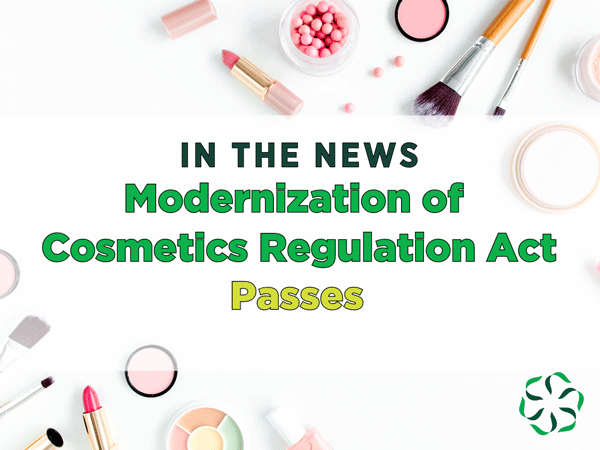The United States passed new legislation that modernizes the cosmetic laws, but what does that mean? In this post, we look at the new legislation.
Cosmetic regulation background.
Before the legislation, the U.S. Food and Drug Administration (FDA) had limited capacity to regulate cosmetics. The former laws were nearly a century old and did not fully reflect our modern environment.
The enactment of the Modernization of Cosmetics Regulation Act of 2022 (MOCRA) allows the FDA to take more proactive steps in ensuring cosmetic safety.
What does MOCRA change?
Formerly, the FDA did not have the authority to enforce the same level of safety requirements for cosmetics as they do for pharmaceuticals and food.
The new legislation enables a variety of new requirements, including:
- adverse event reporting.
- new labeling requirements that include contact information for the adverse event reporting portal.
- giving the FDA authority to issue a mandatory recall for cosmetics shown to cause harm.
- establishment of good manufacturing practices (GMP).
- requirements for manufacturers to register production facilities.
What else is included in MORCA?
Beyond the above changes, there is language regarding three areas of potential concern:
- Talc
- Polyfluoroalkyls substances (PFAS)
- Fragrance
Talc
As we’ve discussed in prior blog posts (1,2), talc can contain asbestos when improperly mined. The new regulations will mandate a specific testing protocol to determine the safety of the talc used in cosmetic products.
Polyfluoroalkyls substances (PFAS)
The FDA will assess the safety of PFAS ingredients in cosmetic products and, in three years-time, produce a publicly available report on the research findings.
Fragrance
Manufacturers must now label any products containing fragrance ingredients known to cause allergic reactions. Prior to the legislation, this was not required on all packaging.
What does this mean going forward?
While the changes may not be immediately visible to most consumers, we can see how this new legislation can positively impact product safety. While it will take time to implement the new changes, within the next two years, we can expect to see the FDA increase its presence regarding cosmetic ingredient safety.
The good news.
If you have any questions about foods and ingredients, please reach out to us on Twitter, send us an email, or submit your idea to us at go.msu.edu/cris-idea.

